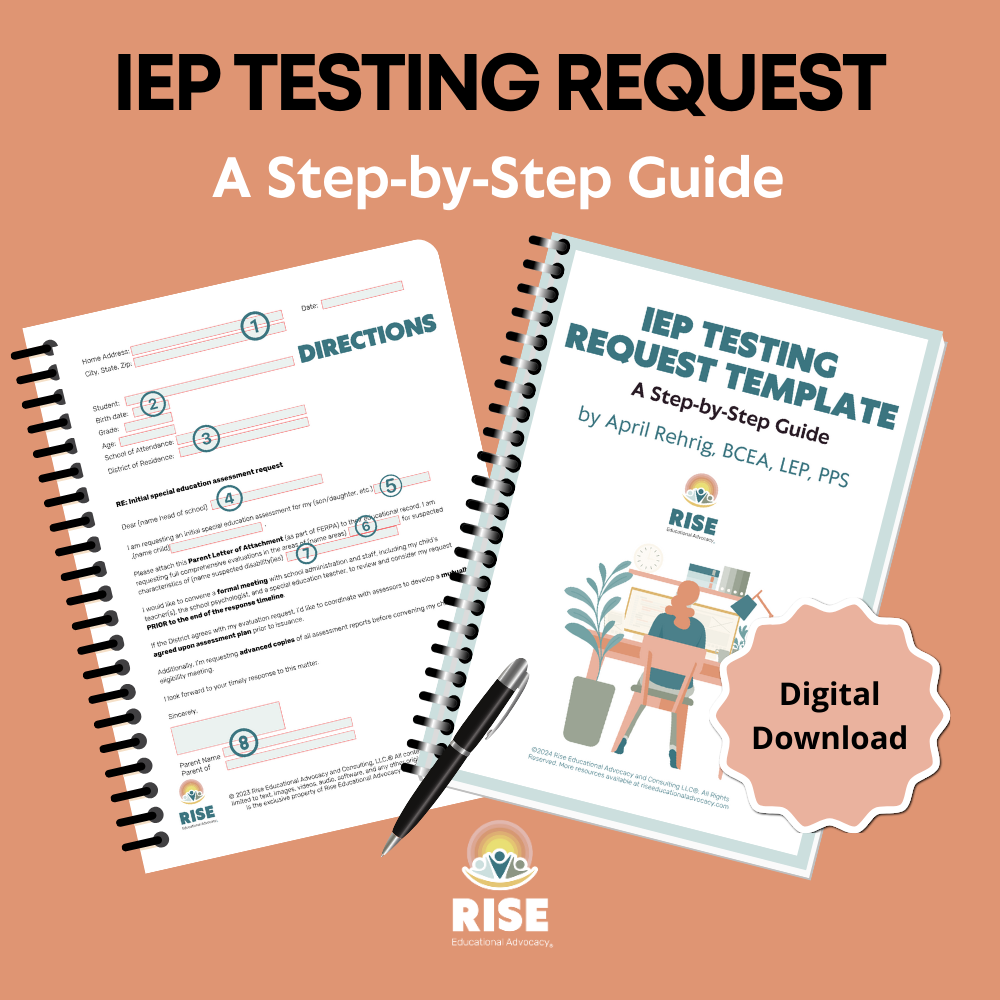
IEPs Aren't Seasonal: How to Request IEP Testing Now
Feeling lost in the IEP Maze? Discover how to secure the right help for your child.
The journey to secure your child's Individualized Education Plan (IEP) can feel overwhelming!
You're not alone. Let's simplify it together. Explore the signs your child might need an IEP when requesting testing and strategies to navigate the process easily.
As winter draws near, your child may be facing ongoing challenges. Battles with homework, classroom struggles, and frequent calls home about behavior or inattention. Understanding the difference between typical struggles and those warranting an IEP is confusing. Let's clarify what it looks like to help you confidently navigate your options.
Getting Started with an IEP
When it comes to education plans, there are two common paths. Read the blog 👉 IEP vs. 504 Plan: Understand the Difference to Choose Right. An IEP doesn't just happen. Students must undergo a complex labyrinth of psycho-educational assessments and other evaluation processes, followed by an eligibility meeting. An Individual Education Plan only commences if your child qualifies in at least one of 13 eligibility categories and requires special education services. The qualification criteria are strict and often hard to meet.
 Knowing the Signs Your Child Needs Testing
Knowing the Signs Your Child Needs Testing
Before starting your voyage, ask yourself: Does your child need more than what the teacher can provide? Testing students for over 20 years, I developed a checklist of telltale signs when it's time to consider an IEP. Check out our FREE guide 👉 10 Reasons to Request Testing to see if your child needs help.
So, your child needs an IEP. Where do you start? The reality is that it’s extremely difficult to get an IEP on your own. The IEP process is long and complicated without a 👉 special education advocate. Now that you know things will be difficult, it's time to prepare yourself in advance.
IEP Timing is Key
Do you request a special education assessment in the fall or spring? The truth is that IEPs aren't seasonal. If your child struggles or you suspect a disability, the right time is NOW. Schools often provide interventions known as MTSS, Response to Intervention (RTI), or Tier 1-3 services when you ask for support. Interventions are helpful, but don't remediate exceptional needs. The problem is that schools implement interventions and then defer (aka deny) parents their legal right to request special education testing.
So, how can you get your child tested without the wait? The secret lies in HOW and WHEN you communicate.
How to Request an IEP
Before you start, you must build a case WHY your child needs an assessment. I often saw parents asking 👉 How to Request Testing or telling the school their child needed help. Just because you ask does not mean your school will hand you an assessment plan. On the contrary, parents must prepare for IEP testing early. Here's our 👉 fillable template to get the green light for testing.

Step 1. Ask for Help
When requesting an IEP you need to tell the school what you want. Your child’s struggles are NOT your fault, and it’s completely your right to ask for help. Reaching out to your school also tells them you want support and are looking for programs or services to address your child’s unique learning needs.
Step 2. Put It In Writing
You must put your request in writing to trigger a formal response from the school. If you ask verbally or mention “testing” in a conference, your school may not respond or tell you to write down the request. If you want to get things going, you must write a rock-solid letter with evidence and documentation justifying why your child needs an evaluation.
Tell the school WHAT you want tested and by WHO. Parent requests must be considered if the school determines a history of need or suspected disability. They must also be considered if parents provide sufficient evidence of an educational need or suspected disability. Now that you’ve got your letter, it’s time to turn it in.
Step 3. Submit Your Request
You’ll need to return your letter in a particular way to add your request to your child’s record. This can be done through a FERPA request using a Parent Letter of Attachment. Emails are “in writing” but often get lost or cause delays when sent to the wrong person. Submitting a PLA to the highest-ranking administrator will ensure your request is considered and added to your child’s record.
Step 4. Follow-up with the School
Now that you’ve asked, put it in writing, and submitted your request, it’s time to move into the home stretch. Asking for a formal school meeting to review and consider your request. Turning in your letter initiates a timeline for your school to respond. Requesting a meeting before the timeline ends gives you another opportunity to lay out your case with a team of people and get them to agree or deny your request within the timeline.
 Empower Your Advocacy
Empower Your Advocacy
Advocacy can seem overwhelming, and there is much to process without help. This is exactly why I created a DIY Workshop: 👉 How To Request Testing. We make it easy with bite-sized videos, downloadable resources, and insider tips, empowering you to navigate the process easily.
At Rise Educational Advocacy®, we provide expert-approved virtual Advocacy Services nationwide, workshops, and 504 guides. We help families and teachers navigate IEP and 504 Plans for K12 students and beyond. Together, we can Build a Better IEP®!
Discover our #1 IEP toolkit!


